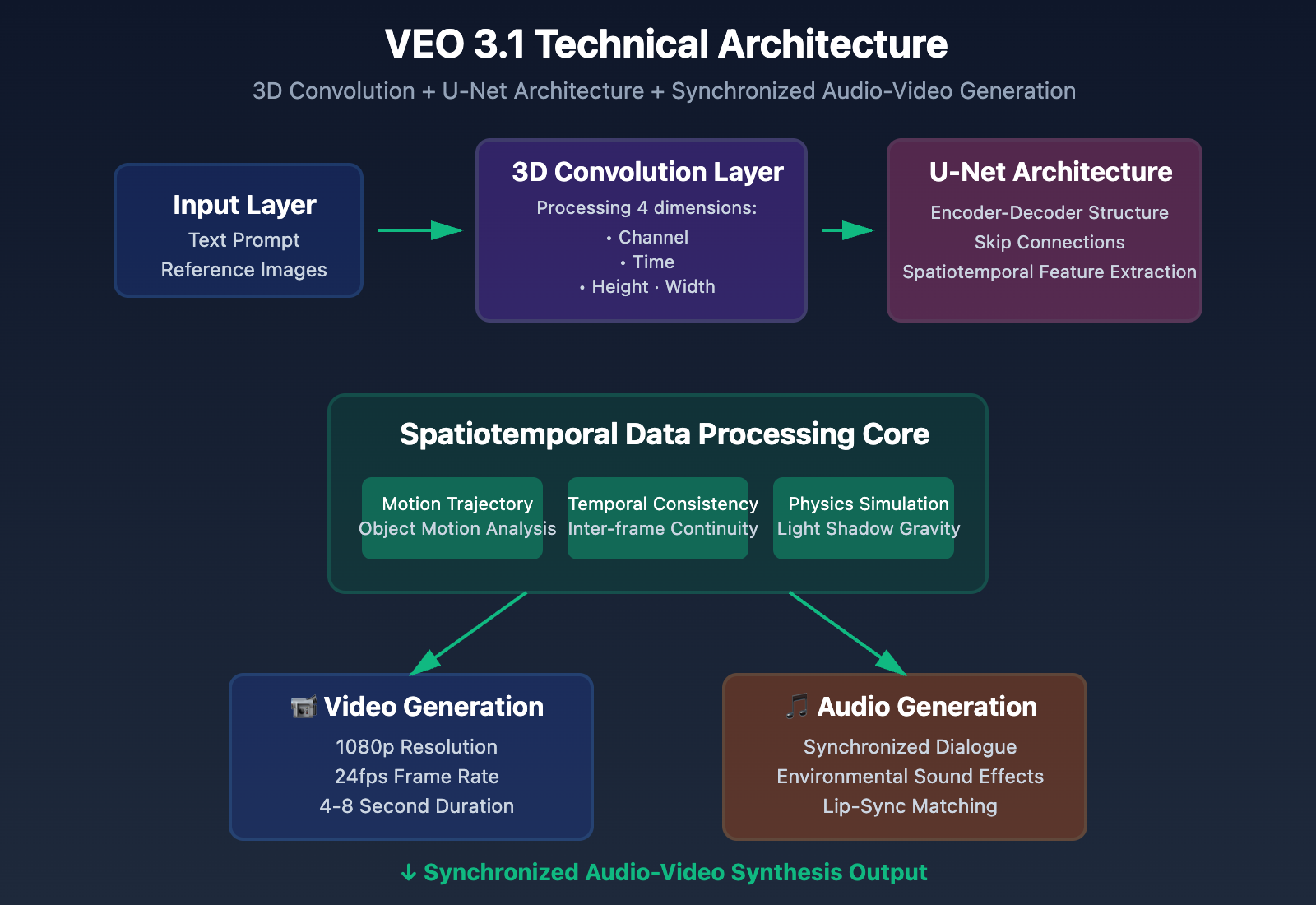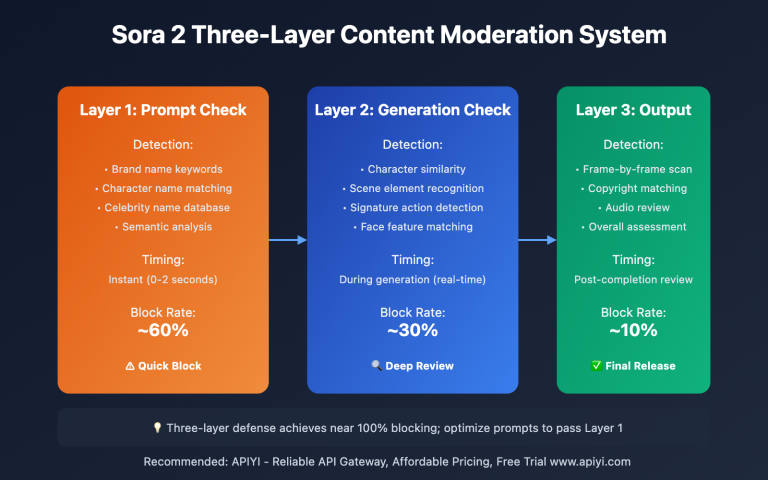In May 2025, Google unveiled the revolutionary Flow AI filmmaking platform and VEO 3 video generation model at the I/O Developer Conference, followed by the enhanced VEO 3.1 in October. This marks the entry of AI video generation technology into a new era of integrated audio-video generation. As of launch, global users have created over 275 million AI videos through the Flow platform, demonstrating remarkable creative potential.
What is Google Flow Platform
Google Flow is an AI filmmaking suite powered by the VEO model, designed specifically for video creation and editing. Through advanced AI technology, it enables users to generate high-quality video content directly from text prompts, image materials, or storyboard scripts.
Core Features of Flow Platform
Text to Video
Users simply input text descriptions, and Flow generates video clips that meet scene requirements. This feature is based on the VEO 3.1 model's deep understanding of natural language, accurately capturing users' creative intentions and transforming them into visual presentations.

Ingredients to Video
This is one of Flow's signature features. Users can upload up to 3 reference images (characters, objects, or scenes), and the model maintains identity, appearance, and style consistency of these elements throughout the video. This is particularly valuable for projects requiring brand visual consistency or character coherence.
Frames to Video
By providing start and end frames, VEO 3.1 can generate smooth, seamless transition animations between them. This feature makes animation production and scene transitions more efficient, allowing creators to focus on keyframe design while leaving the intermediate process to AI.
Access Methods and Pricing
The Flow platform currently serves over 140 countries and regions, accessible through the following subscription plans:
- Google AI Pro: $19.99/month, providing basic AI video generation credits
- Google AI Ultra: $249.99/month, suitable for professional creators and enterprise users
Google has introduced an AI Credits system to manage usage quotas for Whisk and Flow. This flexible billing model allows users of different scales to find suitable plans.
10 Major Technical Advantages of VEO 3.1 Model
VEO 3.1, as an enhanced version released by Google DeepMind in October 2025, has achieved multiple breakthrough improvements over the original VEO 3.
1. Native Synchronized Audio-Video Generation
This is VEO 3.1's most revolutionary feature. Unlike traditional video generation systems that require post-production dubbing, VEO 3.1 integrates synchronized audio generation directly into the video creation process. The model can generate contextual dialogue, environmental sound effects, and background music, precisely aligned with visual components, achieving true "audio-visual synchronization."
AI-generated characters can not only speak, but their lip movements perfectly match the audio. This lip-sync technology, which previously required complex post-production, is now completed by AI in one step.
2. Richer Audio Quality
Compared to VEO 3 released in May, the new version shows significant improvements in audio:
- Multi-character dialogue support: Can generate natural, fluent dialogue between multiple characters, each with unique voice characteristics
- Precise timing of sound effects: Sound effects precisely match on-screen actions, such as footsteps, door closing, object collisions, etc.
- Contextual environmental sounds: Automatically generates appropriate environmental noise based on scenes, such as city street traffic sounds, forest bird songs, etc.
3. High-Fidelity Video Output
VEO 3.1 supports generating:
- Resolution: Up to 1080p full HD quality
- Frame rate: Fixed at 24 frames per second, meeting film standards
- Aspect ratio: Supports landscape (16:9) and portrait (9:16) formats
- Video length: 4-8 seconds per generation, with scene extension enabling continuous sequences exceeding one minute
The two resolution options of 720p and 1080p allow users to flexibly choose based on project requirements and bandwidth constraints.

4. Advanced 3D Convolution Architecture
VEO 3.1's innovation lies in using 3D convolution layers within the U-Net architecture, simultaneously processing spatiotemporal data across channels, time, height, and width. This design enables the model to:
- Extract patterns across space and time
- Achieve native audio generation
- Maintain temporal consistency
- Better understand object motion trajectories
Traditional 2D convolution can only process single-frame images, while 3D convolution can understand relationships between consecutive frames, which is key technology for achieving high-quality video generation.
5. Enhanced Narrative Control Capabilities
VEO 3.1 has deeper understanding of storytelling, film styles, and character interactions. Users can:
- Specify film styles (such as film noir, sci-fi style, documentary style, etc.)
- Control narrative pacing (fast cuts or slow motion)
- Set emotional atmosphere (tension, joy, melancholy, etc.)
- Orchestrate character interaction methods
This understanding of cinematic language makes AI-generated videos no longer simple image stacking, but works with narrative logic and emotional tension.
6. Precise Physics Simulation
VEO 3.1 shows significant improvements in simulating real-world physical effects:
- Lighting effects: Accurately simulates lighting changes at different times and weather conditions
- Object motion: Motion trajectories conforming to physical laws such as gravity and inertia
- Material textures: Detailed representation of metal reflections, fabric folds, water ripples, etc.
- Spatial relationships: Accurate occlusion, distance, and perspective relationships between objects
These improvements in physical realism make generated videos more credible, reducing the "AI feel."
7. Scene Insertion and Removal Functions
Insert function allows adding new elements to existing scenes:
- Inserted objects automatically generate correct shadows and lighting
- Maintains perspective relationships with original scenes
- Can understand spatial occlusion relationships
Remove function can intelligently remove unwanted elements:
- Eliminates flaws or distractions in videos
- Convincingly fills backgrounds without leaving traces
- Maintains natural transitions of surrounding elements
These two functions greatly enhance video editing flexibility, allowing creators to make fine adjustments after generation.
8. Enhanced Image-to-Video
Image-to-video functionality benefits from VEO 3.1's overall improvements:
- Better understanding and adherence to user text prompts
- Maintains input image style and color tone
- More natural and smooth generated motion
- Supports adding audio effects
This makes bringing static materials "to life" easier, providing new creative dimensions for photographers and graphic designers.

9. Scene Extension Technology
Through scene extension functionality, creators can:
- Connect multiple short clips into longer videos
- Each new clip is generated based on the last second of the previous one
- Maintain visual continuity and narrative consistency
- Create continuous sequences exceeding one minute
This technology solves the problem of limited AI video generation length, making it possible to create longer works.
10. Multiple API Access Methods
VEO 3.1 and VEO 3.1 Fast provide flexible integration options:
- Gemini API: Suitable for developers to integrate into their own applications
- Vertex AI: Enterprise-grade deployment solution
- Google AI Studio: Visual development environment
Supports landscape and portrait outputs for both text-to-video and image-to-video, meeting the needs of different platforms and scenarios.
VEO 3.1 API Technical Integration Guide
Basic Requirements
To use the VEO 3.1 API, developers need to prepare:
- Python version: 3.8 or higher
- Installation library: Install Google Generative AI library via pip
- Paid API key: VEO 3.1 is only available at paid tiers, requiring a paid API key
- HTTP knowledge: Understanding of JSON payloads and authentication mechanisms
API Usage Pattern
VEO 3.1 operates using an asynchronous "job" pattern:
- Submit job: Publish a video generation job with prompts and parameters (model, duration, aspect ratio, etc.)
- Poll status: Periodically query job status, waiting for generation to complete
- Get results: Download the generated video file after job completion
This asynchronous pattern is suitable for time-consuming tasks like video generation, avoiding request timeout issues.
Key Parameter Configuration
Basic parameters:
model: Choose veo-3.1 or veo-3.1-fastprompt: Text description, recommended to be detailed and specificduration: Video duration (4-8 seconds)aspect_ratio: 16:9 or 9:16resolution: 720p or 1080p
Advanced parameters:
reference_images: Upload up to 3 reference imagesstart_frame/end_frame: Used for frame-to-frame generationstyle: Specify film styleaudio_enabled: Whether to generate audio
Best Practices for API Integration
🎯 Integration Recommendation: For developers needing to integrate the VEO 3.1 API, we recommend accessing through the API易 apiyi.com platform. This platform has completed comprehensive technical integration of VEO 3.1, providing unified API interface standards and complete development documentation support. Compared to directly integrating with Google API, using the API易 platform can simplify authentication processes, optimize response speeds, and provide Chinese technical support services, particularly suitable for domestic development teams to quickly implement AI video generation functionality.
Accessing through a unified platform also offers the following advantages:
- Reduce integration complexity: One standard interface for multiple AI models
- Improve stability: Professional load balancing and fault tolerance mechanisms
- Cost optimization: Flexible billing methods and bulk discounts
- Quick switching: Seamless switching between different video generation models
Practical Application Scenarios of VEO 3.1
Film and Short Video Production
Scene visualization: Directors can quickly generate scene concept videos using text descriptions, validating creative ideas before actual shooting. This significantly reduces costs and cycles for pre-production concept development.
Storyboard preview: Convert scripts into visual storyboards, helping production teams better understand director intentions. VEO 3.1's film style understanding capabilities make preview effects closer to final productions.
VFX preview: For scenes containing extensive visual effects, AI can first generate preview versions, evaluating effects before investing in expensive VFX production.
Advertising and Marketing
Rapid prototyping: Advertising creatives can generate video prototypes of multiple creative concepts within minutes, accelerating client communication and concept approval.
Localized content: The same advertising concept can quickly generate versions in different languages and cultural backgrounds, reducing localization costs.
A/B testing materials: Generate multiple versions of advertising videos, finding the most effective creative direction through A/B testing.
Education and Training
Scientific experiment demonstrations: Scientific experiments difficult to perform in practice can be demonstrated intuitively through AI video generation, such as chemical reactions, astronomical phenomena, etc.
Historical event recreation: Recreate historical scenes based on literature descriptions, making history teaching more vivid. VEO 3.1's physics simulation capabilities ensure authenticity of recreations.
Skills training videos: Quickly generate training videos for various operational procedures, particularly suitable for training content requiring frequent updates.

Technical Challenges and Future Outlook
Current Technical Limitations
Generation duration limitations: Although longer videos can be created through scene extension, each generation is still limited to 4-8 seconds. For projects requiring long-form narratives, careful segmentation strategies are still needed.
Detail control precision: Although VEO 3.1 provides strong control capabilities, it still struggles to meet professional filmmaking requirements in certain specific details. Complex facial expressions, fine hand movements, etc., remain challenges for AI video generation.
Computational costs: High-quality video generation requires substantial computational resources, reflected in higher API usage costs. For small projects with limited budgets, trade-offs between quality and cost are necessary.
Future Development Directions
Longer native generation: Future versions may support generating longer videos in a single pass, reducing dependence on scene extension.
Real-time generation: With algorithm optimization and hardware advances, real-time or near-real-time video generation may become reality, opening new possibilities for video streaming.
Finer control: Through more advanced prompt engineering and parameter tuning, future versions may achieve control as precise as professional video editing software.
Multimodal fusion: Integrating more input modalities (such as hand-drawn sketches, 3D models, motion capture data, etc.), allowing creators to express creativity in the most natural ways.
Summary and Recommendations
Google Flow platform and VEO 3.1 model represent the highest level of AI video generation technology in 2025, particularly the breakthrough in integrated audio-video generation, providing content creators with unprecedented tools. From a technical perspective, VEO 3.1's 3D convolution architecture, native audio generation, and precise physics simulation demonstrate the enormous potential of deep learning in video generation.
For content creators, the Flow platform lowers the technical barriers to video production, enabling creative ideas to be transformed into visible results more quickly. Whether independent creators or professional production teams, all can find suitable application scenarios from these AI tools.
🎯 Selection Recommendation: For developers and enterprises hoping to integrate VEO 3.1 into their products or workflows, we recommend first testing its capabilities and limitations in small-scale projects to understand its most suitable application scenarios. Through unified access platforms like API易 apiyi.com, technical evaluation and rapid prototyping can be conducted more conveniently, avoiding excessive upfront resource investment. This platform supports unified interface calls for VEO 3.1 and other mainstream video generation models, facilitating comparison of different model effects and flexible switching, helping you find the most suitable technical solution for your project needs.
AI video generation technology continues to develop rapidly. We have reason to believe that with continued technological progress, AI will become a powerful assistant for every content creator, making video creation as simple and natural as writing.






